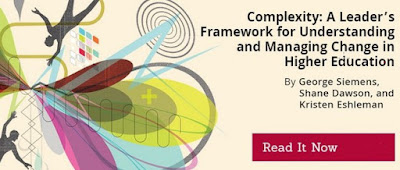In 2011, an open online artificial intelligence course offered at Stanford University attracted several hundred thousand registrants, launching frenzied global interest in how teaching and learning could be extended by colleges and universities
 |
| Photo: Mark Allen Miller © 2018 |
For higher education leaders, this environment can be overwhelming as traditional approaches for managing institutions seem woefully underpowered to meet the multitude of economic-social-technical changes.1 The integrative approaches and core principles of complexity science can provide a framework to address these challenges and to understand the role of rapidly changing colleges and universities in a society that has long been experiencing disruption and transformation.
Enter Complexity
Science Complexity is the foundation of life—evident in even the most mundane of situations. Recall a time when you've found yourself stalled in traffic. You probably began to wonder about ways to solve the traffic problem. If only more people took public transport. If only the government implemented more public transport zones. Wouldn't these actions resolve the problem? In short, no...
Five Complexity Principles
An important role of higher education is preparing individuals to engage meaningfully in society. What happens, however, when the modes of interacting with information presented in formal learning environments no longer align with the lived experiences of learners in work and other environments?
The existing higher education system—with its focus on credit hours, semester-long courses, and formal credentialing—fails to account for new practices available in a digital, and globally connected, world. This is evident in today's global online learning environments, which increasingly blur formal and informal practices.
Five principles of complexity science are of particular relevance to the higher education system. These attributes—networks, emergence, self-organization and social coordination, feedback sensitivity, and agility—are sufficient to provide higher education leaders with an entry into complexity science as a means of observing, understanding, and interacting with change.
Read more...
Additional resources
Complexity: A Leader's Framework for Understanding and Managing Change in Higher Education (PDF)
Source: EDUCAUSE Review





































